Published on: February 29, 2024
AI Efficiency Guide 2024: The Latest Techniques You Need to Know
Author: Inge von Aulock

Put away your magic crystal ball.
Can you extrapolate trends, find patterns, and predict outcomes as accurately as a weather forecaster pointing on the radar, hours before the storm kicks in?
Sounds almost impossible, right?
Yet, here lies the unparalleled strength of Artificial Intelligence. Furthermore, the year 2024 is poised to unfold the most refined techniques of AI, sharpening your predictive prowess while optimizing efficiency like never before.
Hold onto your seat as we embark on a journey, detailing the latest AI techniques you need to know. Techniques that promise to shatter the conventional paradigms of prediction and trend analysis, offering an unexpected window into the future of business intelligence.
Get ready for a transformation, turning whimsical guesswork into ironclad foresight, all thanks to the accelerating strides in AI capabilities.
Mastering AI performance optimization: techniques to boost efficiency
- A deep insight into AI performance optimization
- A clear step-by-step guide to streamline AI performance
- Techniques to enhance AI efficiency
Understanding AI performance optimization
AI performance optimization involves fine-tuning AI systems to perform at their highest potential. This can be achieved by enhancing model accuracy, decreasing computational resources, or fast-tracking processing time.
For AI systems to be efficient, trade-offs are often required. Depending on specific task requirements, one may need to compromise between accuracy, speed, and resource consumption.

But why is AI performance optimization vital?
In today’s fast-paced world, a fraction of a second can be a game-changer in business strategy, defense systems, or healthcare diagnostics. Optimizing AI performance can drastically reduce latency, leading to quicker decision making.
Moreover, optimized AI models demand fewer computational resources, lowering system costs. With power consumption related to AI systems a growing concern, efficient models are more sustainable.
Therefore, optimizing AI performance equates to optimizing business performance.
Step-by-step guide to AI performance optimization
Optimizing AI performance is a continual process requiring precision, expertise, and technology mastery. Here’s a clear roadmap.
- Identifying performance metrics: The initial step involves defining the yardsticks for AI performance. Consider factors like accuracy, latency, power consumption, training data, and operational costs. Each use case has unique priorities; thus, pick those that resonate with your particular need.
- Running baseline tests: Before diving into optimizations, gauge your model’s current performance using the identified metrics. This gives you a solid starting point.
- Exploring model architectures: Different models have varying efficiency levels. Explore multiple architectures and select the one that aligns best with your performance needs.
- Leveraging quantization and pruning: Techniques like quantization and pruning can help optimize your model further. Quantization reduces the numerical precision of variables in the model, thereby reducing memory consumption and boosting speed. On the other hand, pruning eliminates unessential model parameters without affecting its functionality, thus making the model compact and more efficient.
- Continuous monitoring and adjustments: AI performance optimization is a recurring task. Monitor your model’s efficiency continuously and make necessary adjustments to keep it on par with changing trends and requirements.
Now, armed with this knowledge of AI performance optimization, we’re ready to apply these techniques using various AI tools.
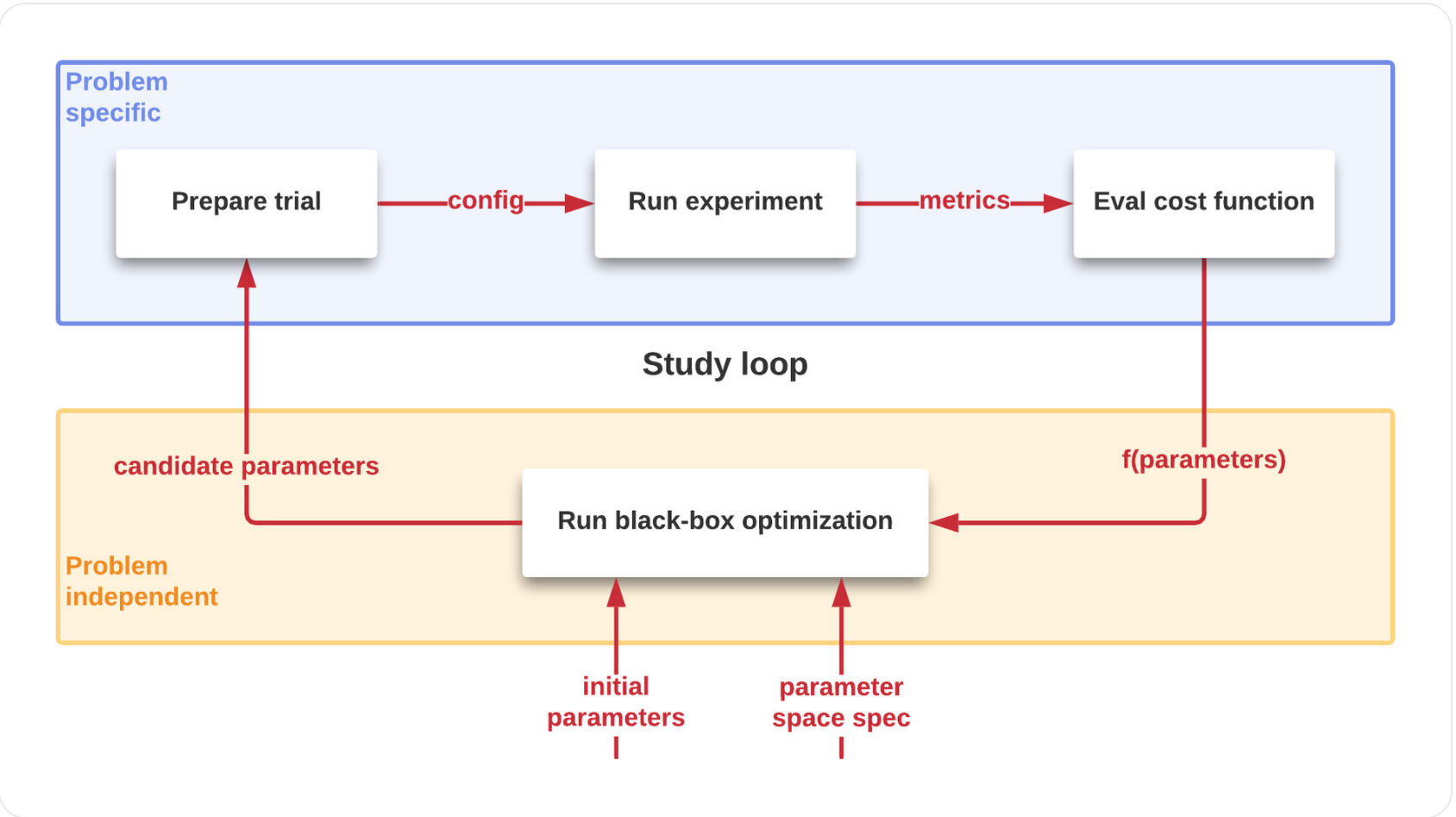
Harnessing AI tools for unmatched efficiency
- Notable AI tools to streamline business processes
- Key AI tools developed specifically for 2024-year advancements
- Guideline for choosing the right AI tools according to business needs
Overview of AI tools for efficiency
With the growing digital transformation, efficiency is the name of the game. Artificial Intelligence, or AI, effectively merges with business processes to streamline workflow, automate mundane tasks, and result in improved efficiency.
When it comes to AI tools, the market is vast. Through continuous innovation, fresh technologies constantly surface. These tools, powered by AI, drill down into data, make sense of it and equip businesses to make informed decisions that turn out to be game-changers.
Top AI tools in 2024 for enhanced efficiency
We may wish to imagine a landscape where AI advancements set the stage for remarkable business services. In 2024, AI tools are expected to redefine efficiency levels.
Several AI tools have made their mark and emerged at the top. They are predicted to empower businesses with better productivity and effectiveness. Siri, Alexa, Google Assistant signify the pinnacle of AI transformation.
AI tools are expanding their foothold in delivering unexceptional customer services, data analysis, cyber-security, and risk management. Brands such as Cogito, Kustomer, LivePerson, or LogMeIn are predicted to be the bellwethers in their respective niches.
But let’s look at a few specific tools you can use to make your life and business more efficient:
- ChatGPT: As far as large language models go, ChatGPT is one of the most advanced. This pre-trained model can do just about anything you ask it to from human language text prompts. Whether that’s writing code, sentiment analysis, or text generation, the list is truly endless. We’re sure you’ll be able to incorporate it into your business and save time and money, without sacrificing quality.
- Jasper: What started as a simple text-generative AI is now an incredibly powerful tool, offering analytics, insights, company acceleration, and a hub of knowledge about your business. This is a one-stop shop for efficiency that’ll suit any business owner.
- Dall-E 3: Generating images may sound like an unecessary tool. But that is until you realize how important visuals are for your company. Your marketing efforts will finally pay off when you can generate any kind of on-brand visuals you like!
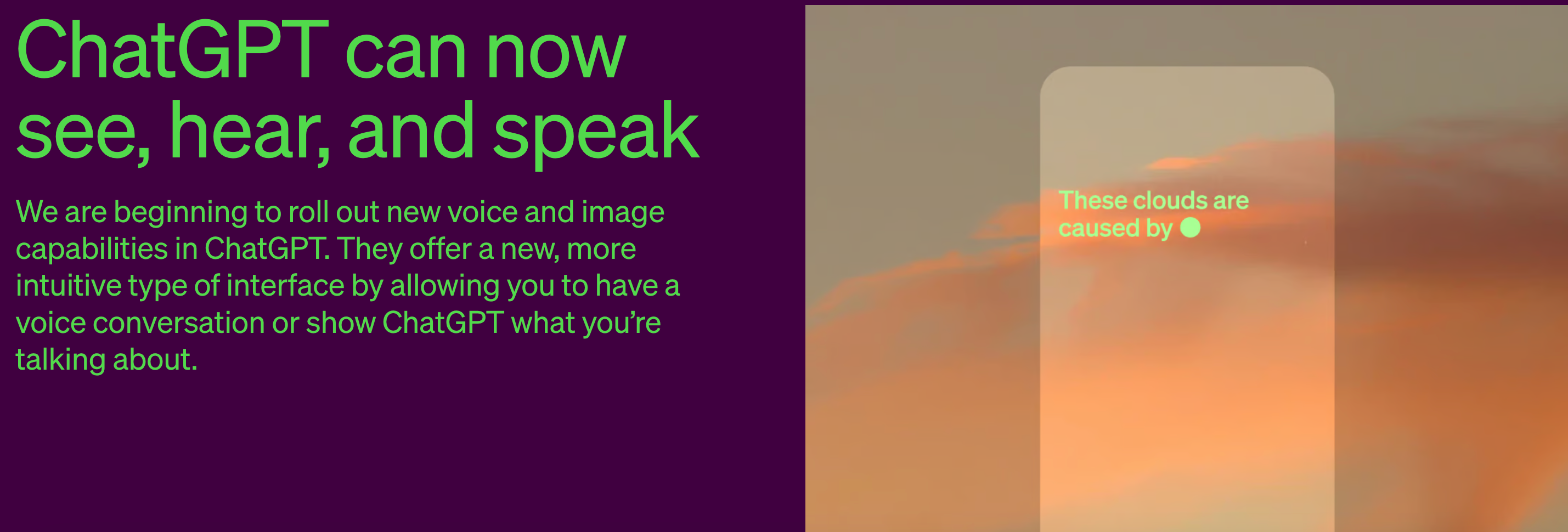
Choosing the right AI tools for your business
It’s not always about the most powerful or popular AI tools. It’s about the right one. A business first needs to:
- Assess its needs
- Study the available options
- Pick the right AI tool
Start by determining what part of your business needs streamlining. Is it customer service, data analysis, or perhaps risk management? Once the requirements are clear, match them with the AI tools available.
Take your time. Evaluate the AI tools’ efficiency against your goals. Looking into the future, you should also consider whether the tool can scale with your business.
It’s a serious business decision, so involve key stakeholders. Consider everyone’s feedback. And remember— the right AI tool is the one that achieves your business goals without introducing unnecessary complications.
This is where AI really bolsters its value, giving your productivity and efficiency a major lift off. After all, in the field of AI, it’s about being smart and making the right decisions. Use the comparison table below when you’re deciding on the right tool for you.
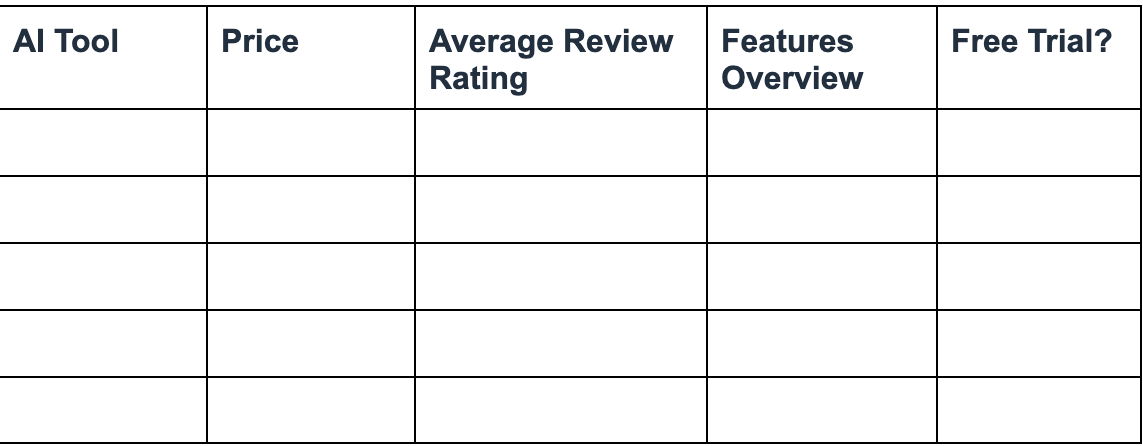
Integrating AI into business workflow for maximum efficiency
- Explores AI’s potency in streamlining business operations.
- Unveils actionable steps towards incorporating AI into your business.
The role of AI in streamlining business workflow
AI can make your business sail against the tide efficaciously. It intelligently delegates tasks, reduces human error, and makes large amounts of data manageable. Let’s look at the three main roles in a little more detail:
- High productivity and seamless operations: AI turns business operations into a well-oiled machine by automating repetitive tasks. For instance, AI can capture, process, and classify data automatically, saving employees hours of arduous manual documenting and analysis. Simultaneously, it mitigates human error probability, ensuring your business operates seamlessly.
- Optimal decision making: AI brings palpable precision to management decisions. By providing insightful data analysis, it assists with forecasting sales, predicting market trends, and detailing customer behaviour. These insights give business managers the upper hand, allowing them to make informed and strategic decisions.
- Scalability: AI can handle the mounting piles of data a growing business gathers. Without demanding additional human resources, this data collection makes it easier for businesses to scale and evolve smoothly.

3 Steps to incorporate AI into your business workflow
Incorporating AI into your business may seem daunting, but a systematic approach can make it a less strenuous task. Let’s look into the key steps that can smooth this process:
- Identify business needs and set goals: It is crucial to understand your business’s needs and outline clear-cut objectives. AI can bring myriad benefits, but to maximise the advantages, it’s wise to tune the AI application aligning to your business needs and long-term goals.
- Choose the right AI tools: Once you’ve identified your needs, the next step is to identify suitable AI tools tailored to your business requirements. It’s advised to assess these tools based on their capacity to optimise your workflow without disrupting your existing systems.
- Pilot and implement: Test the chosen AI systems on smaller projects or specific areas of your business to gauge their effectiveness before a full-blown implementation. Once you’re satisfied with the results, integrate the AI tools into your wider business workflow.
By understanding AI’s potential and integrating it systematically, businesses can position themselves firmly for future development and success.
AI in HR: driving efficiency and effectiveness
- AI is transforming HR productivity by automating mundane tasks
- Successful cases of AI integration in HR reveal significant efficiency gains
- Get ready: AI implementation in HR is set for a versatile upgrade in 2023
The impact of AI on HR efficiency
Adopting AI systems in your HR department is akin to acquiring a savvy assistant who never sleeps. Not only do AI assistants handle repetitive tasks such as scheduling interviews and managing employee records, but they also contribute to complex decision-making, such as predictive analyses and talent acquisitions. The automation of mundane tasks frees up HR professionals to focus on more strategic matters, boosting overall productivity.
AI’s potential extends beyond routine work. It can assist in recognizing patterns in large data sets, affecting pivotal decisions like hiring and employee retention strategies. This slicing and interpreting of data improves the odds of making informed, beneficial decisions while saving countless hours of human effort.
The intersection of AI and HR is also marked by a humanized touch. By analyzing data from multiple sources like social media, AI can even assess the cultural fit of a potential hire, reducing subjectivity and bias in recruitment.

Case studies: successful implementation of AI in HR
One notable example of successful AI integration in an HR function is IBM’s AI application – Watson. Faced with an extensive task of reinventing its talent management, IBM deployed Watson to augment hiring decisions. Watson’s machine learning technology helped IBM’s HR team understand which candidates would be a successful fit, improving the speed and quality of their hiring process.
Another success story is the multinational conglomerate, Unilever. The company integrated automated systems and AI to manage an expansive, globally disparate talent pool. Using AI-powered games and video interviews, they dramatically streamlined the hiring process, reducing the time to hire from four months to four weeks. These stories underscore the immense potential and historical performance of AI in optimizing HR processes.
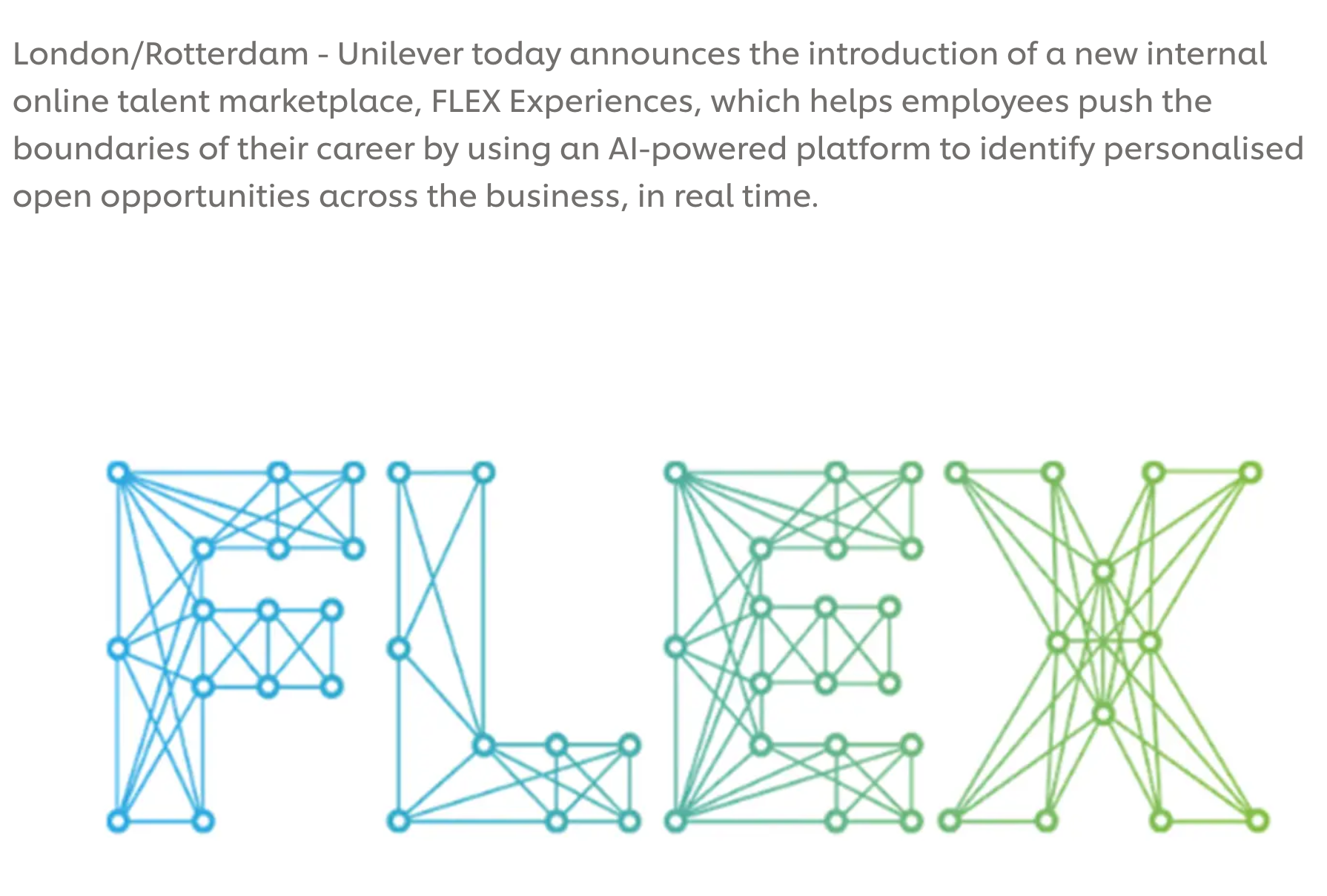
Future trends: AI and HR in 2024
Looking closer to the horizon, AI’s evolving role in HR beckons transformative disruptions. Companies will increasingly rely on AI’s capabilities to predict employee behavior, improve diversity, and enhance the overall employee experience. AI will enable HR professionals to predict attrition risks, allowing them to engage proactively and avoid costly turnover issues.
Also on the docket is the widespread implementation of Machine learning (ML)-generated insights. These will provide granular, data-driven understandings of employee productivity, decision-making habits, and promotion predictions. This foresight will arm HR with powerful tools to create environments that nurture and retain their top talents.
Lastly, AI will not just facilitate team building but actually become part of the team itself. Sophisticated AI chatbots will evolve into virtual assistants, engaging employees around the clock with instant, personalized responses. AI’s progression and application in HR will undoubtedly continue to redefine the future of work as we know it.
Learning AI for efficiency: A comprehensive guide
- As the business landscape grows more complex, AI has become an indispensable tool in driving productivity.
- Develop a deeper understanding of its utility by delving into its fundamentals and practical applications.
- Mastering AI means mastering time, resources, and outcomes.
Why learning AI is crucial for efficiency
As industries continue to innovate and expand, expertise in AI, or artificial intelligence, is no longer a luxury but a necessity. Operating at the forefront of technology, AI possesses immense potential to drive efficiency.
Its applications spread wide, from automating routine tasks to predicting trends, aiding decision-making, and even mitigating risks.
Indeed, understanding how to wield AI effectively is key to optimizing many facets of business operations. More importantly, it empowers you to anticipate changes, make smarter decisions, and foster an innovation culture integral to maintaining a competitive edge.
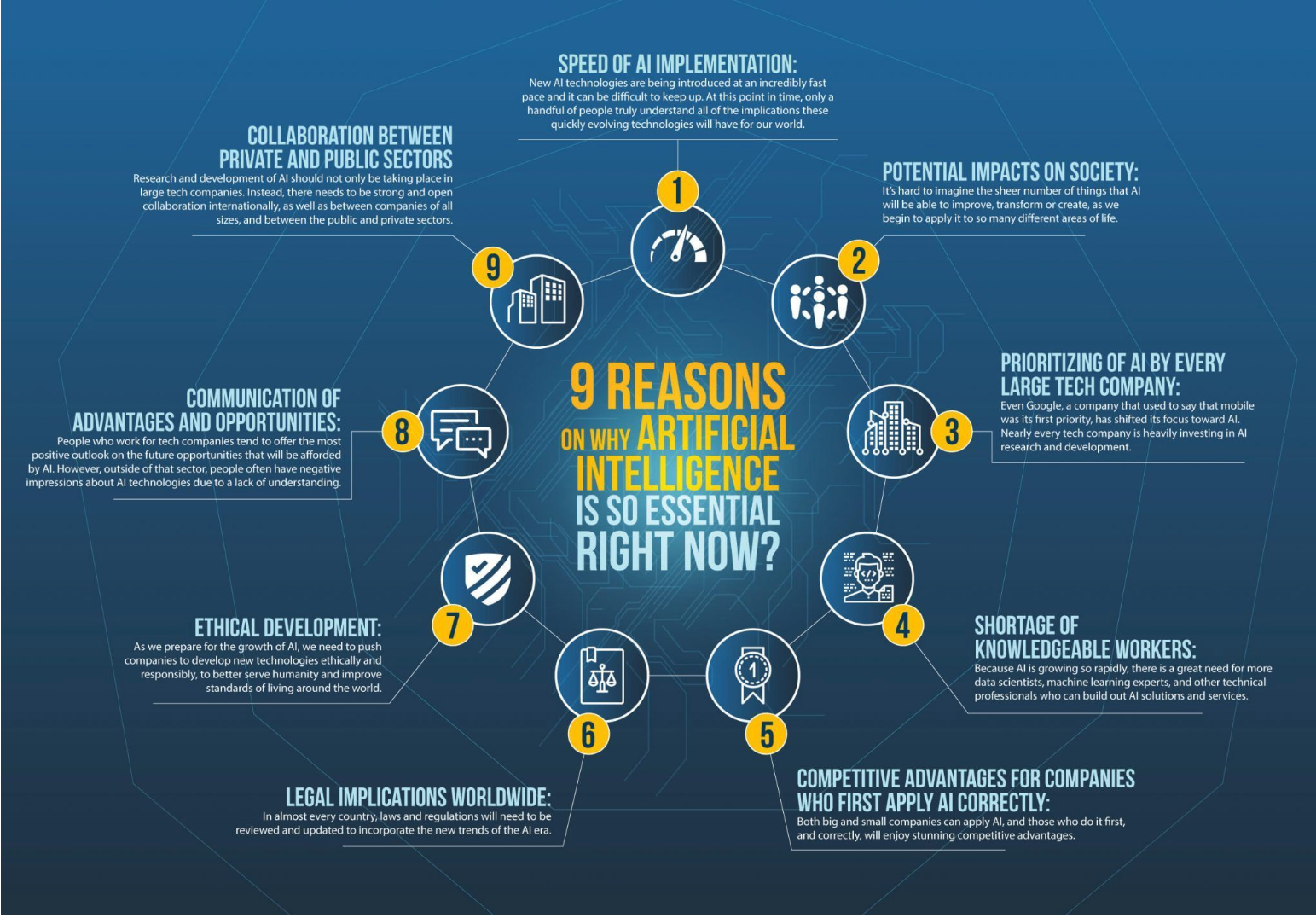
Best resources to learn AI in 2024
To truly harness the power of AI, one must first seek knowledge. Fortunately, resources abound in this digital age, catering to varying levels of expertise making the learning process a breeze. From beginners seeking to grasp concepts to professionals looking for advanced techniques, there are platforms to satisfy every learning need.
A handful of online platforms like Coursera, edX, and Udemy offer comprehensive AI courses created by world-leading universities and businesses. With an array of top-quality content, e-books, and video tutorials, these platforms provide enriching learning experiences that accommodate busy schedules.
Additionally, forums like Reddit and Stack Overflow can be beneficial as interactive platforms where users share insights, answer queries, and discuss challenges they’ve encountered in their AI journey.

Practical tips for learning AI for efficiency
While the sheer magnitude of information available can be overwhelming, focusing on the practical aspects of AI guides your learning towards driving efficiency.
- Ground yourself in the fundamental theories of AI: This enables an understanding of its applications. Next, focus on problem-solving using AI algorithms. Application is key to gras(stack, queue, heap, tree, graph) building a robust understanding.
- Involve yourself in large scale projects and real-world scenarios: This will provide hands-on experience. Additionally, stay updated with the latest advancements and explore open-source AI projects on platforms like GitHub and Bitbucket.
- Never underestimate the power of networking: Engaging with AI communities or forums encourages knowledge exchange, collaboration, and staying abreast of industry trends.
Just like mastering any new skill, learning AI for efficiency is a continuing process. Remember, transforming information into wisdom comes with patience, persistence, and practical application.
Embracing tomorrow: drawing the blueprint of AI efficiency
With 2023’s groundbreaking techniques, AI is no longer a buzzword but an operational necessity that aids in boosting productivity, improving decision-making, and propelling innovation. These are not just trends, but strategic tools for a competitive edge.
Remember, the value derived isn’t just about being technologically advanced. It’s about nurturing a culture that fosters information-driven, efficient, and transformative processes.
Now, don’t you just stay informed. Apply these techniques. Experiment with machine learning algorithms. Deploy Natural Language Processing in your customer service. Utilize predictive analytics for decision-making.
Before we sign off, pause and ponder – which of these AI techniques aligns most with your current operational needs and future growth objectives?
Remember, as we step into 2024, it’s not about catching up with AI advancements or replacing human intelligence with machine learning models. It’s about leading with them. Embrace tomorrow, starting today.
Inge von Aulock
I'm the Founder & CEO of Top Apps, the #1 App directory available online. In my spare time, I write about Technology, Artificial Intelligence, and review apps and tools I've tried, right here on the Top Apps blog.
Recent Articles

Microsoft servers are down. Your business grinds to a halt. Panic sets in. Stop. Breathe. You’ve got this. This guide gives you 7...
Read More
As a business leader, you’re always searching for ways to stay ahead of the competition. What about AI in marketing and sales? In...
Read More
Struggling to keep up with the competition in 2025? You’re not alone. Small and medium enterprises (SMEs) are facing a rapidly evolving business...
Read More